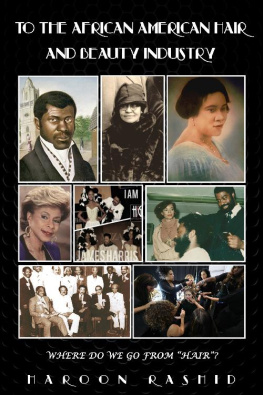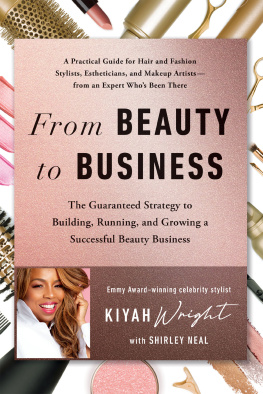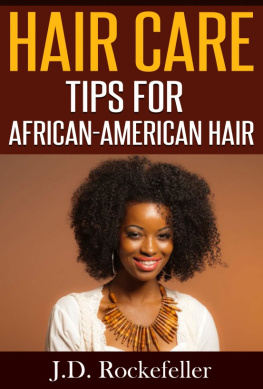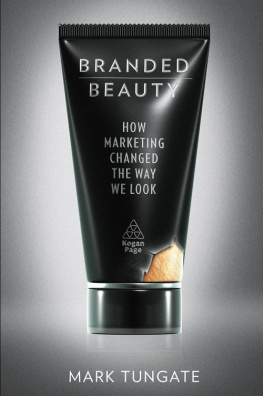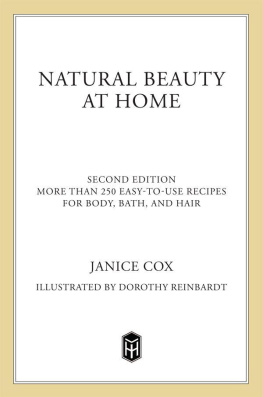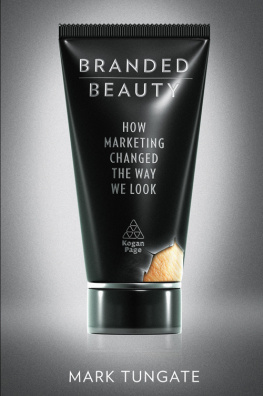Haroon Rashid - To the African American Hair and Beauty Industry: Where Do We Go from hair?
Here you can read online Haroon Rashid - To the African American Hair and Beauty Industry: Where Do We Go from hair? full text of the book (entire story) in english for free. Download pdf and epub, get meaning, cover and reviews about this ebook. year: 2020, publisher: The Pointe Image Book Publishing, genre: Romance novel. Description of the work, (preface) as well as reviews are available. Best literature library LitArk.com created for fans of good reading and offers a wide selection of genres:
Romance novel
Science fiction
Adventure
Detective
Science
History
Home and family
Prose
Art
Politics
Computer
Non-fiction
Religion
Business
Children
Humor
Choose a favorite category and find really read worthwhile books. Enjoy immersion in the world of imagination, feel the emotions of the characters or learn something new for yourself, make an fascinating discovery.
- Book:To the African American Hair and Beauty Industry: Where Do We Go from hair?
- Author:
- Publisher:The Pointe Image Book Publishing
- Genre:
- Year:2020
- Rating:3 / 5
- Favourites:Add to favourites
- Your mark:
To the African American Hair and Beauty Industry: Where Do We Go from hair?: summary, description and annotation
We offer to read an annotation, description, summary or preface (depends on what the author of the book "To the African American Hair and Beauty Industry: Where Do We Go from hair?" wrote himself). If you haven't found the necessary information about the book — write in the comments, we will try to find it.
When I look at the Hair and Beauty industry as a whole I see a troubling concern about the future for the American professional services to general consumers. Over the last twenty to thirty years there has been a tremendous shift in the style, class and professional services of operation in the African American Hair and Beauty Industry. I sometimes wonder if the professional practitioners know the difference between daytime, evening, formal and or Avant guard presentation. Or do they care about the value of perception?
I know that the public does basically rely on, and at any given time look to their so-called professional hair and beauty consultant to give them reliable personal image consultant advice and services. The problem is that more than two-thirds of the so-called professionals are likely commercial sensational operators that operate from a one-size-fits-all mentality, as it relates to fashion and imagery. This type of servicing will have a tendency sometimes, at leaving far too many in the public behind the fashion curve, and in some cases totally inappropriate for progressive appearances.
Then, there is the state of economic security for the professional operators that for the most part operate without the basic security of a Trade Union, or pension funds for their retirements, and or investment loans.
Pierre Toussaint was an African man who was brought to America from Haiti as a slave in 1787 and was given his freedom as a skilled hairstylist for the upper-class white women in New York City. He was so respected for his skills and social advocacy that The Catholic Archdiocese had considered Pierre Toussaint as a candidate for a Saint. In his biography there is a scroll that reads From Slave to Saint: Pierre Toussaint.
It is also a known fact that from the hey days the contributions made by two African American business icons, Madam C. J. Walker and Mrs. Annie Malone, the African American hair and beauty industry have played a major in the success of many businesses in the African American community. In July 1905 the great Madam C.J. Walker developed her own hair-care business called the Madam C.J. Walker products and trade union, which inspired the National Beauty Culturist League.
I believe there is a stellar history in the African American community that needs to be reinvested in and modernized for the future of twenty-first century African American cultural professionals. The formulas for success have already been applied in the past but have been abandoned in the present time; and what is needed is a new leadership to bring back the wealth and pride of the African American Hair and Beauty Industry in America.
Haroon Rashid: author's other books
Who wrote To the African American Hair and Beauty Industry: Where Do We Go from hair?? Find out the surname, the name of the author of the book and a list of all author's works by series.

